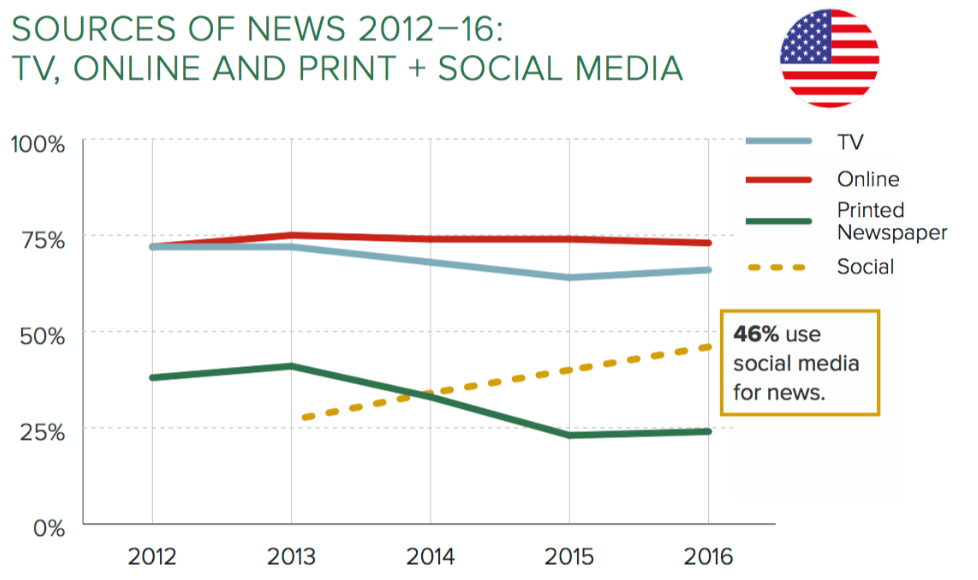There’s not a lot of great news in the fifth annual Oxford University Reuters Institute for the Study of Journalism survey. The most favored sources of news for people are the media least likely to provide in-depth information and, in many cases, serious news.
The biggest change, the survey said, has been the growth of news accessed via social media sites like Facebook, Twitter, Instagram, and Snapchat. That’s not terribly surprising; it’s not terribly depressing. Social media is a great place to learn about the news because it’s so easy for journalists to get bottom-line information to the audience quickly.
Where it becomes “interesting” — to coin a term — is where social media is the dominant source of information.
The majority of a younger audience now gets its news primarily through social media. The survey, a reputable annual piece of research, seemed through the quotes that illustrate the respondents choices, to also make them appear as vapid as some of the stories that qualify as news.
Totally. I mean one minute a 69-year-old man is alive and then he’s dead. Crazy, right?
One in 10 people now use social media as their main source of information, but it’s a statistic that’s still hard to translate since a sizeable amount of that information comes from the work of mainstream reporters, who are often toiling for institutions that are dying. When the plug is finally pulled on newspapers, for example, what then?
“Social media is just one way of accessing online news – the vast majority of which still ends up being consumed on a news website,” the survey says.
In addition to online access, most consumers also continue to access news via TV, radio, or print but the extent of this is significantly affected by age. For every group under 45, online news is now more important than television news. For 18–24s social media (28%) comes out ahead of TV (24%) for the first time with print lagging behind at just 6%.
But a startling conclusion of the survey is that people are just fine with social media algorithms replacing human editors in selecting what news people see. Thirty-six percent said they are happy with algorithms selecting the news based on what people have already ready, while only 30 percent said they are most happy with the judgment of editors.
But the survey said “traditional” news brands are still enormously important. “Most of the content consumed still comes from newspaper groups, broadcasters, or digital born brands that have invested in original content,” it said.
It’s hard to know how far – or how fast – the shift to distributed media will go, but this feels like the beginning of a new phase of media disruption. News organisations will need to keep adapting to the changes ahead – whilst recognising that journalistic track record, trust, and brand equity will remain necessary if not sufficient ingredients of success.


